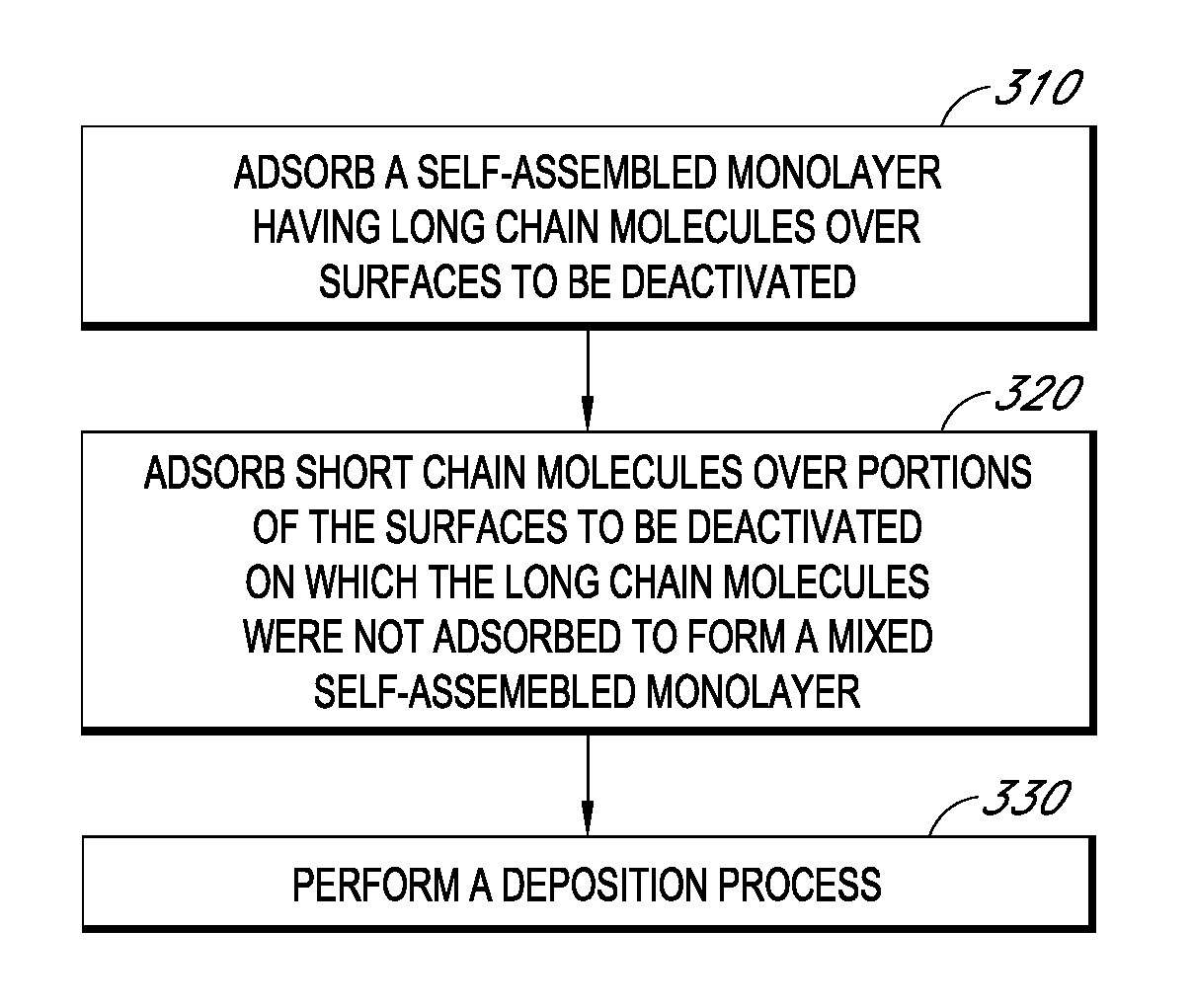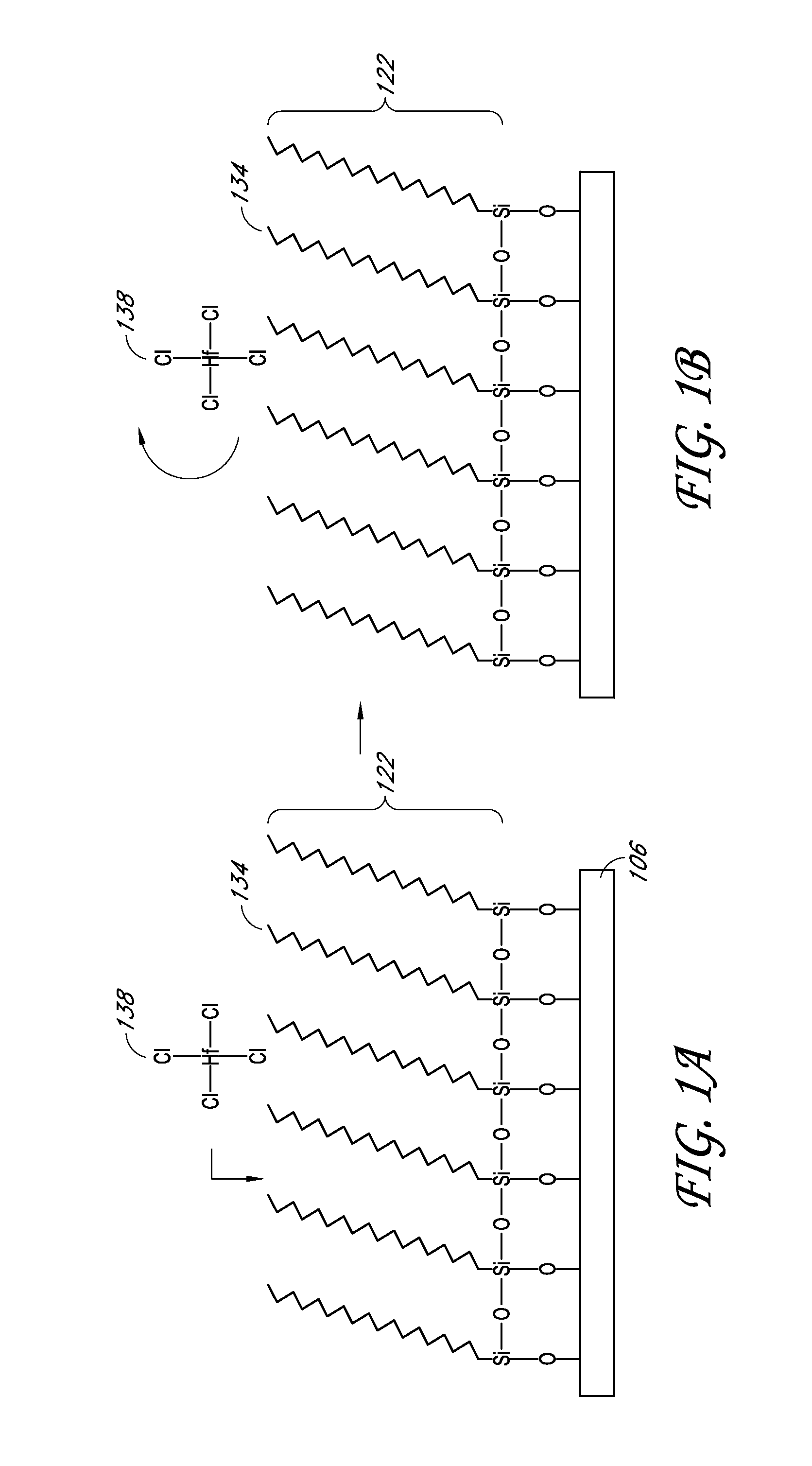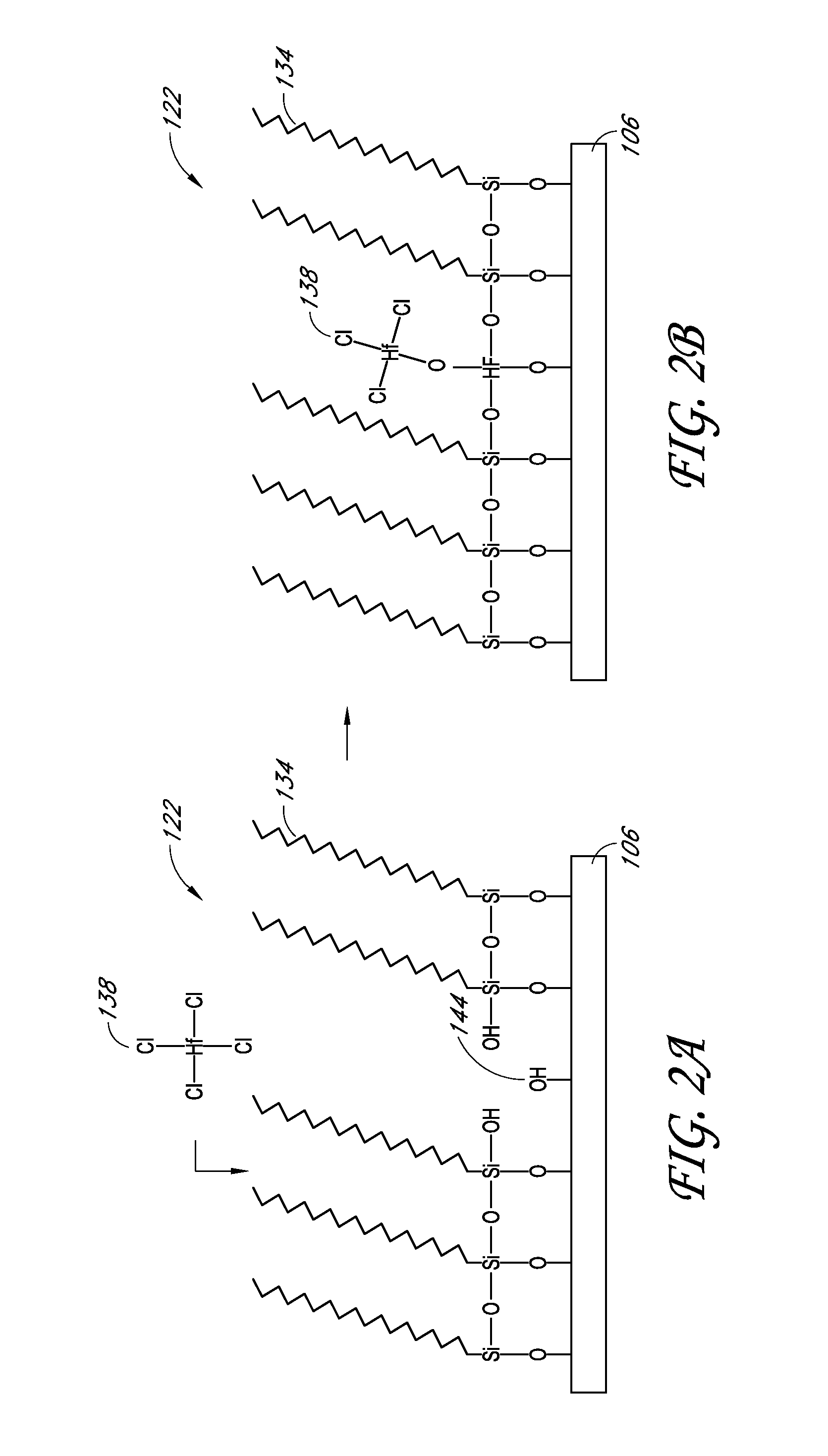Reactive site deactivation against vapor deposition
a technology of reactive site and vapor deposition, which is applied in the direction of layered products, semiconductor/solid-state device details, coatings, etc., can solve the problems of increasing the pulse and purge time required to saturate the substrate surface, contaminating the substrate surface, and reducing the saturating effect of the substrate surfa
- Summary
- Abstract
- Description
- Claims
- Application Information
AI Technical Summary
Problems solved by technology
Method used
Image
Examples
Embodiment Construction
[0030]As noted in the Background section, processes exist to deactivate particular surfaces (e.g., reactor surfaces and surfaces of partially fabricated integrated circuit structures) against vapor deposition such as ALD to allow selective deposition on untreated surfaces. One such process involves forming a densely-packed, self-assembled monolayer (SAM) over exposed surfaces on which film deposition is not desired. A SAM is a relatively ordered assembly of molecules that spontaneously adsorb (also called chemisorb) from either vapor or liquid phase precursors on a surface. A typical SAM molecule includes a terminal functional group, a hydro-carbon chain and a head group. By forming a SAM over selected surfaces, the SAM can prevent film growth over the exposed surfaces using certain types of vapor precursors by blocking reactive sites on the exposed surface that would otherwise react with those deposition precursors. Such selective deactivation can be particularly effective against ...
PUM
| Property | Measurement | Unit |
|---|---|---|
| Fraction | aaaaa | aaaaa |
| Fraction | aaaaa | aaaaa |
| Time | aaaaa | aaaaa |
Abstract
Description
Claims
Application Information
 Login to View More
Login to View More - R&D
- Intellectual Property
- Life Sciences
- Materials
- Tech Scout
- Unparalleled Data Quality
- Higher Quality Content
- 60% Fewer Hallucinations
Browse by: Latest US Patents, China's latest patents, Technical Efficacy Thesaurus, Application Domain, Technology Topic, Popular Technical Reports.
© 2025 PatSnap. All rights reserved.Legal|Privacy policy|Modern Slavery Act Transparency Statement|Sitemap|About US| Contact US: help@patsnap.com



